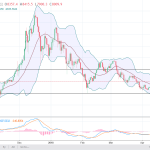Shrewd investors and speculators are wise to look at the Treasury Yield curve as an indicator of where the U.S. economy is heading. Historically, it has been an incredibly accurate barometer to forecasting the economy. In fact, starting in the 1960’s the yield curve has accurately predicted the last 7 recessions the US economy has endured.
Note: The yield curve is the rate that the US Treasuries offer investors to invest in various maturity instruments they offer, (Bills, Notes Bonds, ranging from maturities from 1 month to 30 years). It indicates the interest rates which the US government must pay to borrow money. When the short-term interest rates are higher than long term rates, that is called an inversion. This is not the traditional or normal environment.
Traditionally, we should expect long term rates to be higher than short term rates: meaning the longer tie you up your money, the more you should earn. When longer rates are higher than shorter term rates, that is called a normal, or positive yield curve. When the yield curve inverts, that is the marketplace predicting a recession. Each of the last 7 recessions were accurately predicted when the yield curve inverted within approximately a year of the economy entering that recession. Most recently, the yield curve inverted in August 2006, a bit more than a year before the recession started in late 2007.
The constantly changing shape and curve of the yield curve acts as a predictor of the economy. Looking at the different shapes, we see:
Yield Curve Example 1: Positive or Normal Yield Curve
A normal or positive yield curve is forecasting a strong economy. It is forecasting positive economic growth, rising interest rates and increasing inflationary pressures.

Yield Curve Example 2: Inverted Yield Curve
As described, an inverted curve is predicting an economic downturn (recession), resulting in diminishing economic growth, lowering interest rates and deflationary pressure. The past 7 recessions have all been accurately predated by an inversion of the yield curve.











Leave A Comment